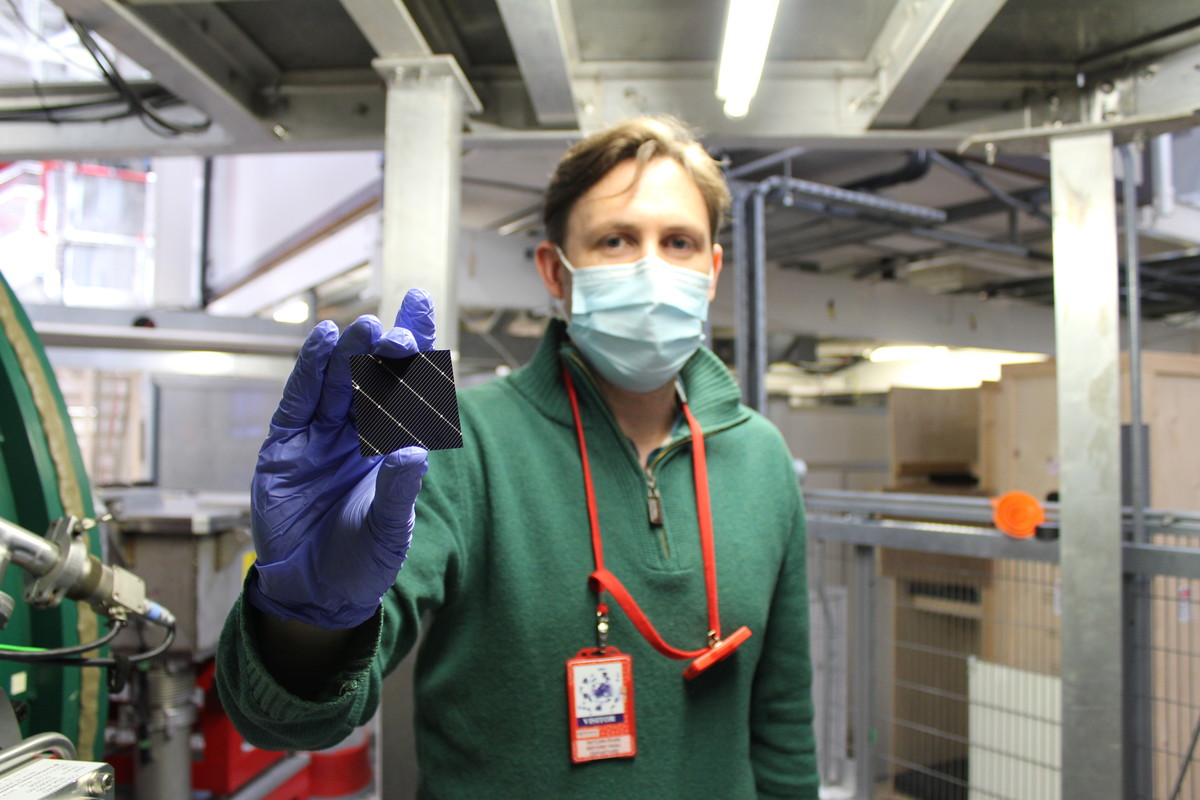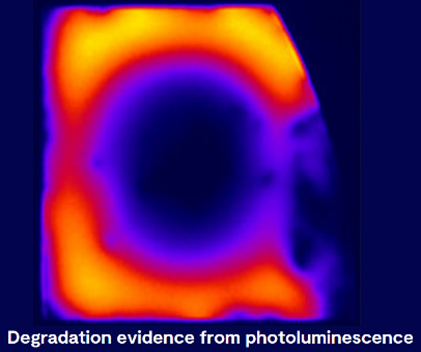Solar Cells
Solar cells generate power from a voltage created in the presence of light. This is produced by the movement of charge carriers (electrons and holes) across an electrical gradient. The longer a charge carrier survives, the more energy it can produce overall and so the better the efficiency of the cell. At the moment, solar cells can convert roughly 22% of the solar energy they catch into useful energy. In efforts to help improve this efficiency, researchers have been investigating the kinetics of charge carriers in silicon wafers by measuring their lifetimes. This will allow us to detect how fast carrier recombination occurs in the material, and so how changes to the sample alter its properties.

Photoexcited Muon Spin Spectroscopy
A new technique, photoexcited muon spin spectroscopy (photo-μSR), has been developed at ISIS, which can be used to probe charge carrier lifetime on a microscopic scale. The new method exploits the capabilities of the HIFI instrument to carry out muon spin spectroscopy in combination with illumination by laser light. The technique uses a beam of positively charged muons directed at the silicon wafer. When a positive muon is implanted in the wafer it captures an electron and creates a hydrogen-like state, called Muonium. Carriers can interact with the muonium atom, inducing a change in the muon polarisation and relaxation in the μSR signal over time, which can be used to measure the charge carrier lifetime.
Existing techniques measure the lifetime in wafers as a bulk average and cannot separate recombination mechanisms at different depths. However, the attractive feature of photo-μSR is that it can measure lifetime as a function of depth. Metal sheet degraders can be used to reduce the energy of the muon beam, altering the depth of muon penetration, and therefore enable lifetime spectra to be measured at different depths within the wafer. As a result, it allows separation of the surface and bulk recombination rate. This is useful because the wafer surfaces are often protected by a technique called passivation, which reduces the number of surface defects. Measurements of the surface lifetime allow us to directly test and improve the passivation techniques regardless of the purity of the wafer beneath and vice versa.
An Unexpected Finding
A team from ISIS and the University of Warwick pushed the technique to its limits by applying it to the study of silicon wafers passivated by atomic layer deposition. This method enables carrier lifetimes of longer than 10ms to be achieved. At this level, the carrier lifetime becomes extremely sensitive to even the smallest number of defects (recombination centres) in a sample. It was even effected by exposure to the muon beam, suggesting that collisions between the muons and nuclei in the sample can create recombination centres. Further evidence for this conclusion came from post-muon experiments, including photoluminescence measurements (see image), superacid passivation and deep level transient spectroscopy.
by atomic layer deposition. This method enables carrier lifetimes of longer than 10ms to be achieved. At this level, the carrier lifetime becomes extremely sensitive to even the smallest number of defects (recombination centres) in a sample. It was even effected by exposure to the muon beam, suggesting that collisions between the muons and nuclei in the sample can create recombination centres. Further evidence for this conclusion came from post-muon experiments, including photoluminescence measurements (see image), superacid passivation and deep level transient spectroscopy.
The Future
Measuring surface carrier lifetime separately to bulk lifetime would allow the enhancement of the purity in both bulk and the surface. Looking forward, this research could help improve our ability to convert solar energy into power.
Further Information:
The full paper can be found at https://aip.scitation.org/doi/10.1063/5.0099492
